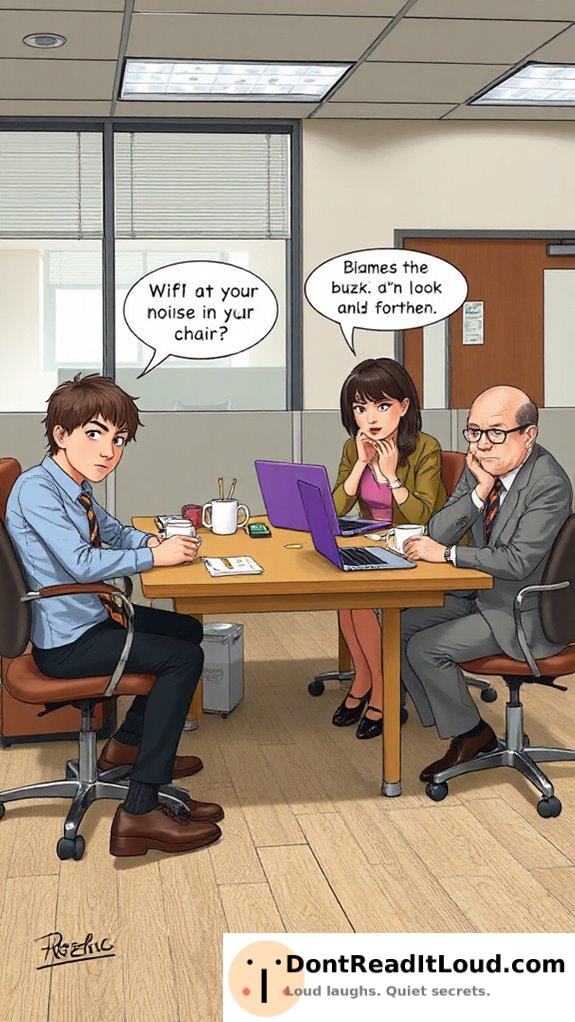
To avoid getting blamed for farting in class, wait for a noisy moment or laughter to cover the sound. Pick times when no one is looking your way and sit close to open windows to help the smell fade quickly. Perfect the silent release by shifting your position and letting it out slowly. If needed, make a distraction or casually blame the noise on your chair. Stay relaxed and keep your expression neutral—there are even more subtle tricks you can try if you want.
Timing Your Release for Maximum Discretion

When you need to fart in class, timing is key to staying discreet. Use smart strategies by observing what’s happening around you.
Wait for a loud noise—like a cough, rustling papers, or the teacher writing on the board—to cover the sound. Watch for social cues: if students are laughing, moving, or distracted by their phones, it’s a safer moment.
If everyone is silent and focused, it’s best to wait. Instead, look for natural bursts of noise or movement. By syncing your release with these moments, you’ll reduce the risk of being noticed.
Choosing the Right Moment and Environment

One essential factor in staying unnoticed is picking the right moment and environment for your release. Pay attention to class dynamics—if the teacher’s focused on the board or everyone’s engaged in group work, you’ve got a better chance of slipping by undetected.
Fart etiquette means never choosing a silent classroom or a tense discussion; instead, wait for background noise like laughter or moving chairs. Avoid letting loose when people are close or when there’s minimal distraction.
If possible, move away from the center of attention or stand near open windows or doors to help any smell escape. By timing your actions with the classroom’s natural activity, you’re less likely to be noticed.
Mastering the Silent Fart Technique

After you’ve found the right moment and place, your next goal is keeping things quiet.
Start by adjusting your position—shift your weight and stay relaxed. Tense muscles can make things noisier, so keep calm.
Slowly let the gas out to avoid sudden sounds. Wearing thicker clothes can help mask any noise.
If you’re on a hard chair, gently lift one leg to allow the air to escape silently.
With these discreet methods, you can stay unnoticed and avoid any awkward situations.
Using Distractions to Shift Attention

Although silence helps, sometimes you’ll need to shift your classmates’ focus away from yourself. Distraction techniques can be useful in these situations.
Try casually dropping your pencil or rummaging through your backpack right before or after the moment. These simple actions can divert attention and buy you a bit of time. You might also start a quick conversation or ask a question to engage the group.
When everyone is chatting or laughing, they’re less likely to notice anything out of the ordinary. Pointing out something interesting on the board or outside the window can also shift the group’s focus.
The key is to act naturally and time your distractions well to avoid suspicion.
Blaming It on the Chair or Other Noises

If the sound escapes at the wrong moment, try blaming it on your chair or a nearby noise. When you notice your fart, shift in your seat to make your chair squeak. This provides a believable excuse, since chair noises are common and often ignored.
If someone drops a pencil or slams a book, let those sounds cover your slip. You could also tap your foot or shuffle papers to blend in with the usual classroom activity. By timing your actions with the noise, it becomes harder for others to tell where it came from.
Stay alert for any chance to use background sounds as cover.
Maintaining an Innocent Expression and Body Language

Covering up the noise is only part of the challenge—your appearance and behavior are just as important. To avoid suspicion after an accident, keep your facial expression neutral. Don’t wrinkle your nose, widen your eyes, or look around anxiously. Maintain a calm face, as though nothing happened.
Pair this with a relaxed, natural body posture. Avoid tensing up, making sudden movements, or freezing. Sit comfortably, maybe lean back slightly, and continue with your activities. If you appear calm and unconcerned, classmates are less likely to suspect you.
People often judge guilt by reactions, so controlling your expression and posture is essential.
Conclusion
By following these tips, you’ll discreetly handle passing gas in class without attracting attention. Choose your moment carefully and stay alert to your environment. Use subtle distractions, and keep your face neutral. With some practice and confidence, you can dodge any embarrassment. Everyone needs to pass gas sometimes—now you can do it quietly, even in a full classroom.



